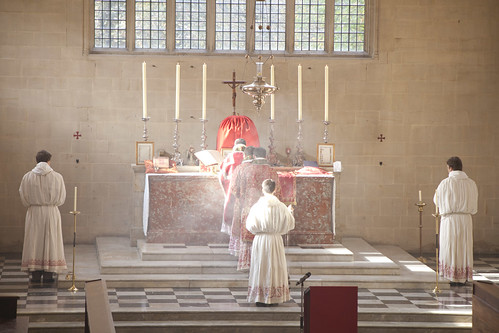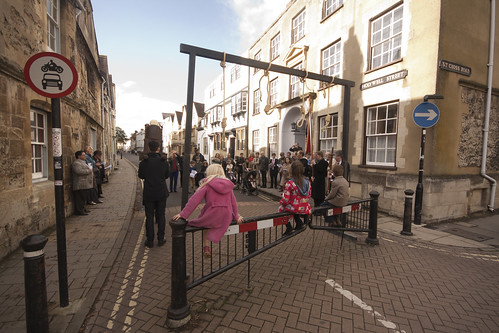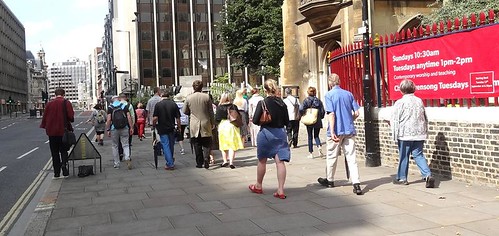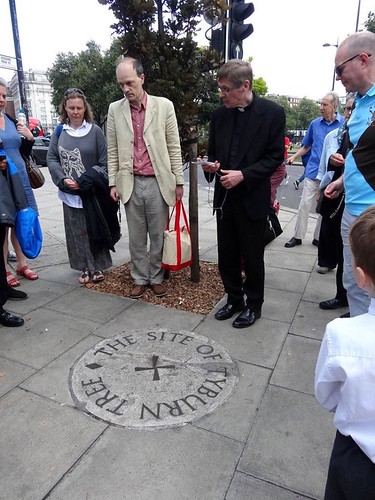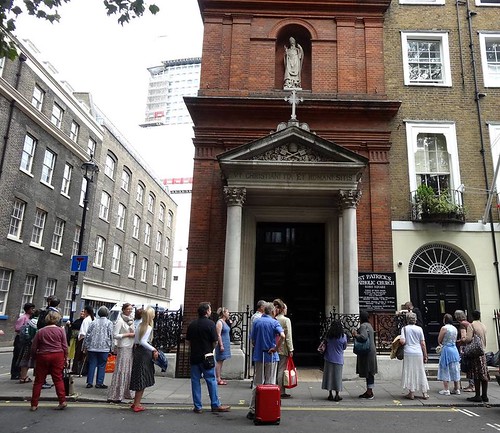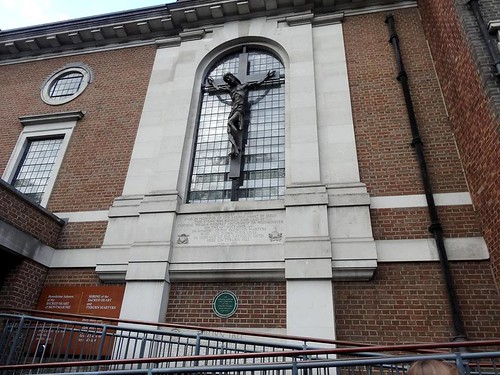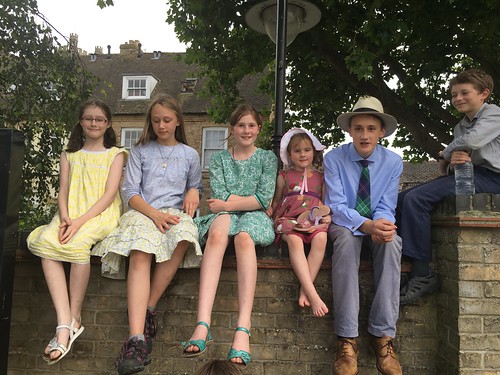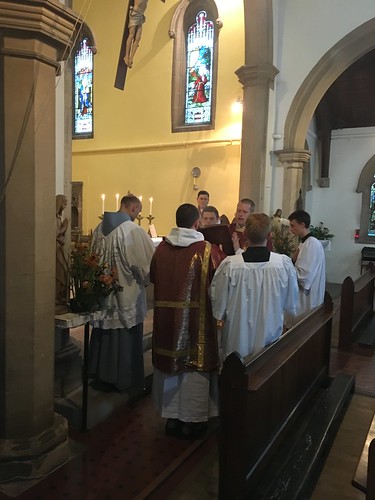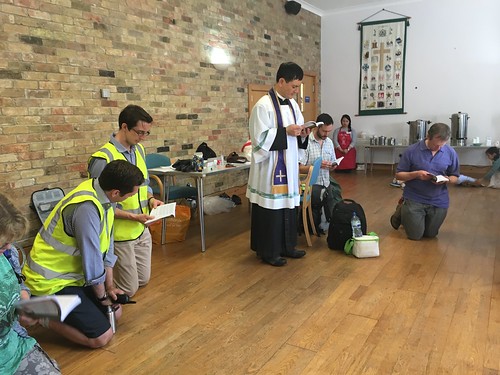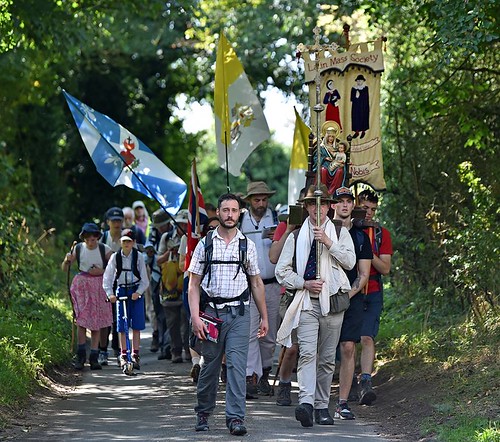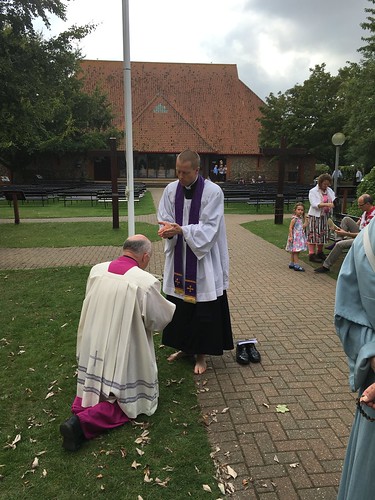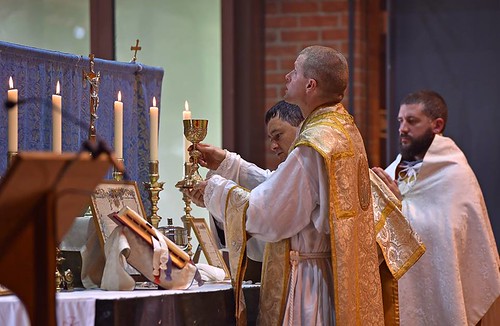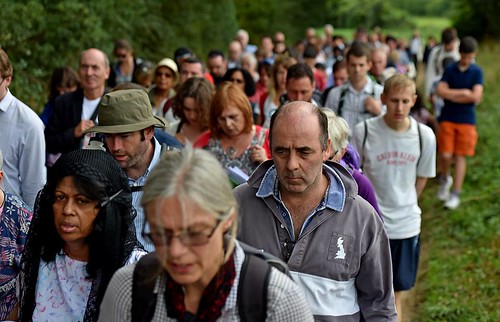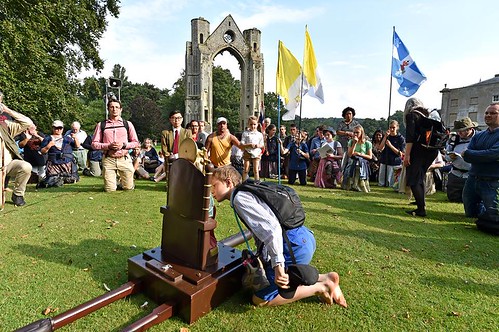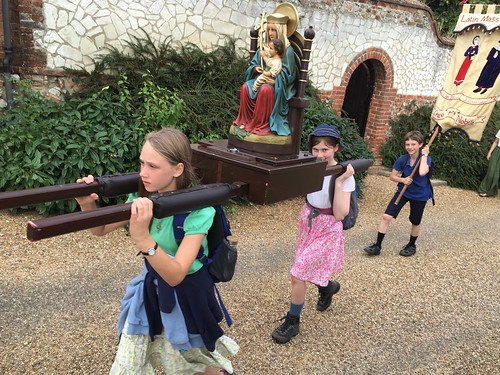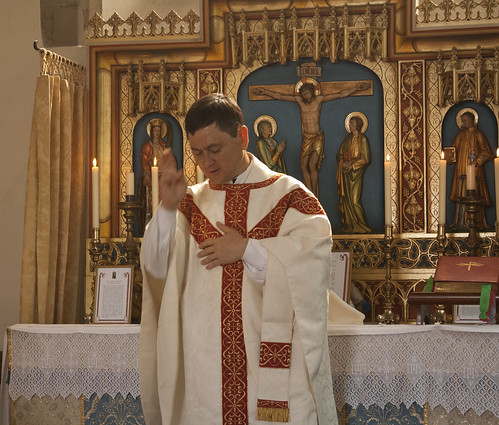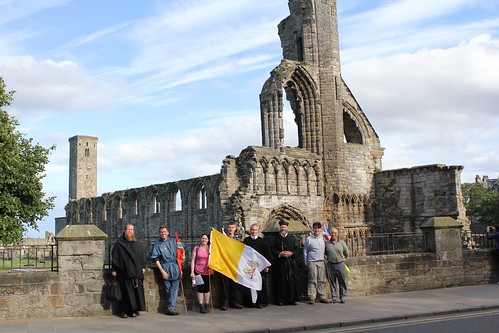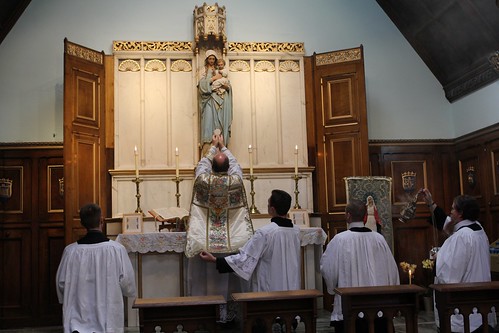Chairman's Blog
A third priest for the Institute in New Brighton
From Canon Amaurty Montjean of the Institute of Christ the King Sovereign Priest, Rector of the Shrine of SS Peter & Paul and St Philomena in New Brighton, the Wirral, the 'Dome of Home':
See their website here.
Support the work of the LMS by becoming an 'Anniversary Supporter'.
Letter on Child Protection
I'm not going to comment on the news about Ampleforth College; but today I am reposting this from January 2012, about Downside.
------------------------------------------------
This weekend the Catholic Herald has published a letter of mine on the subject of 'Child Protection'. It responds to an article by Will Heaven.
 Will Heaven (Comment, Jan 20th) tells us that monastic schools, like Downside, where there have been failures of child protection, should be handed over to lay trustees. By the same logic, I assume he would want the many lay schools plagued by such failures to be handed over to monks.
Will Heaven (Comment, Jan 20th) tells us that monastic schools, like Downside, where there have been failures of child protection, should be handed over to lay trustees. By the same logic, I assume he would want the many lay schools plagued by such failures to be handed over to monks.
We need to look, not at the clerical or lay status of trustees, but at their attitudes and policies. Unfortunately the leadership of Catholic schools appears to be following the example of its secular counterpart, both by imposing explicit sex education on our children and by an increasing reluctance to expect staff to live in accord with Church teaching.
The secular model is to promote anarchic sexual liberalism in schools, balanced by an hysterical concern for the procedures of child protection. This is not going to solve the problem of the sexual exploitation of children in the long term. Until the Catholic school sector is prepared to buck this trend decisively I, like an increasing number of Catholic parents, will be teaching my children at home.
Yours sincerely,
Joseph Shaw
Two things struck me about Heaven's article. The first was his idea that the problems at Downside would go away if the monks were no longer the trustees. It is reasonable I suppose that a religious order which makes a hash of an apostolate hands it over to someone else, but Heaven's suggestion smacks of anti-clericalism. How, exactly, would having lay control help? Hasn't he noticed all the non-religious, indeed non-Catholic schools which have had child protection issues? It is the attitudes and policies of the individuals in positions of authority which are important, not whether they wear clerical dress. On this, Jonathan West of 'Confessions of a Skeptic' agrees with me, in his Tablet article this week and his comments under Heaven's article: lay leadership is not a 'silver bullet'. (Tablet link for subscribers.)
I have another concern about the attempt to separate monastic schools from the monasteries which founded them. If this happens we will have two institutions sharing a site, but nothing else. It will be entirely reasonable for the monastic community to ask why they are allowing this alien institution to take up so much of their land, rent free. Why not turn it into luxury flats? Hybrid models, in which the Abbot appoints some trustees and some unnamed person others, seem to be a recipe for permanent conflict.
The other thing which struck me was Heaven's jaunty reference to Downside going mixed. He writes:
You might think that the sudden onset of colder weather might make Heaven wonder whether 2005 was spring after all. For why did they they let in girls, to a school which had been single-sex since its foundation a century earlier? Did the monks suddenly feel a special charism to look after the emotional needs of adolescent girls? I don't think so. Letting in girls enabled it to bring number back up to capacity: oh, that's it!
I don't blame the monks of Downside in particular, they were just following the trend. The point is that this is a trend in which the interests of pupils were sacrificed to financial considerations, and to educational fashion. No one was ignorant, by 2005, of the educational benefits to girls of being in a all-girls' school; the subject had been studied to death. Catholic boys' schools, usually with superior brand-recognition and resources, continued to undermine the girls' schools by going mixed because it was in their interests, not in the girls'.
 If anyone is interested in the Church's teaching on co-education, they can look at Pius XI on the subject in 1939 (Divine illius magistri):
If anyone is interested in the Church's teaching on co-education, they can look at Pius XI on the subject in 1939 (Divine illius magistri):
This is related, by the denial of original sin, to the real elephant in the room, which I mention in my letter, which is the sexualisation of children. The motto of the secular educational establishment is 'Do whatever you are comfortable doing; don't let anyone make you feel guilty about it; don't let anyone do to you what you're not comfortable with'. This places the burden of child protection on the children themselves. Since the only standard of what is abusive is the child's perception, accusations of abuse are justified almost by definition. By the same token, the 'grooming' activities of abusers, in which they attempt to convince their victims that abuse is really ok, have been adopted as school policy: nothing is not ok, children, if you just accept it. This is why we have the extraordinary situation in which schools are deliberately sexualising children, and then crying blue murder at the least plausible accusation.
The Catholic Church has a great opportunity here, because the secular orthodoxy has become so extreme, and so incoherent, that at least some people will give an alternative a hearing. The Natural Law tells us what is abusive, and we have the intellectual resources to create an environment for children in which abuse is less likely to happen. Why not do it, and make a virtue of it?
I see Oona Stanard is stepping down from the Catholic Education Service. Perhaps her replacement can give these matters some serious consideration.
Full disclosure: I am a Fellow of St Benet's Hall, a Hall of Oxford University whose trustees are the Abbot and Council of Ampleforth Abbey.
Oxford Pilgrimage 29th October
The Latin Mass Society's Pilgrimage to Oxford - which I organise as the Society's Local Representative - will take place on 29th October, with High Mass in Oxford's Blackfriars at 11am, in the traditional Dominican Rite, followed at 2pm by a procession to one of the two sites of martyrdom in the city.
We've been doing this since 2005, but it didn't take place last year because the ceiling of the church had collapsed. I'm glad to say that it has since been repaired! It is a wonderful event, we get a good number of people to process through the streets of Oxford with a processional statue, and we have a mock-up gallows at this site of martyrdom which always draws the interest of passers' by, and the occasional comment in a student newspaper.
It is worth making the point: it wasn't only Anglicans who died for their beleifs, or religiously motivated actions, in Oxford. Four Catholic martyrs died in 1589, on this spot, two priests and two laymen, and another priest, Bl George Napier, died on the Castle gallows in 1610. All have been beatified.
Support the work of the LMS by becoming an 'Anniversary Supporter'.
LMS Pilgrimage to Aylesford, 1st October
Support the work of the LMS by becoming an 'Anniversary Supporter'.
LMS Tyburn Walk 2016
In 2014 the Latin Mass Society organised a devotional 'walk' from the site of Newgate Prison to the site of the Tyburn Tree, the gallows where prisoners from Newgate were executed, among them at least 105 Catholic martyrs. We didn't manage to do it last year, but it happened on the Bank Holiday Monday this week, while I was still in Walsingham. Here are some pictures, thanks to @idlerambler.
In 2014 we had 45 people with us; this year, there were 70. Also, this year we had Low Mass in Tyburn Convent, build near the site of the Tyburn Tree, which was a great privilege.
The walk was led by Fr Mark Elliot-Smith of the Ordinariate of Our Lady of Walsingham, who is based nearby in Our Lady of the Assumption, Warwick Street.
The above is St Patrick's, Soho Square, which is close to the route. And below is Tyburn Convent.
Support the work of the LMS by becoming an 'Anniversary Supporter'.
Walsingham 2016: Photo essay
I took very few photos this year, since John Aron was taking lots; I've included some of his below.
In a nutshell, the LMS Walking Pilgrimage from Ely to Walsingham was a great success, with lots of people, lots of prayers and songs, and lots of graces. And lots of children.
We had with us Fr James Mawdsley FSSP, now at St Mary's, Warrington, and Fr Michael Rowe from Perth in Australia, who has been with us twice before. We were able to have High Mass with the help of Br Anthony of the Friars of Gosport, who is awaiting ordination. We also had a Fraternity seminarian, the Rev Mr Thomas O'Sullivan, very well known to me from his Oxford days; he was MC at our masses, another Gosport Friar, Br Philomeno, who has done the pilgrimage before, and a lay brother of the Society of St Vincent Ferrer, Br Vincent Hoare, who sang with our small schola.
The Blessing of Pilgrims from the Roman Ritual.
Did I mention there was also lots of walking? About 58 miles, in fact. The weather was on the hot side, but nothing too extreme.
Mgr John Armitage, Shrine Custodian at the Catholic Shrine, received a First Blessing from Fr Mawdsely, who was ordained in June.
The Shrine has been given the status of Minor Basilica since our last visit.
For our big Mass on Sunday and the Holy Mile and our devotions at the site of the Holy House, we were joined by lots of people who were there for the day, and people from Youth 2000, which takes place the same week.
Fr Rowe celebrated the Sung Mass we always have on the Monday following the pilgrimage in the Slipper Chapel.
Support the work of the LMS by becoming an 'Anniversary Supporter'.
Succesfull walking pilgrimage in Scotland
Support the work of the LMS by becoming an 'Anniversary Supporter'.
Why they hate us
This has already done the rounds in the media, but I'd not seen one particular aspect pointed up. The slick propaganda magazine of the Islamic State (ISIS), Dabiq, has a chilling article entitled 'Why we hate you and why we fight you'. You can see this hideous publication here; the article starts on p30. They hate us, they say, for three reasons: for our Christianity, for our liberal secularism, and for Western foreign policy. They emphasise the point that the last issue is not the primary one.
To illustrate the West's secular liberalism they display a photograph of a pro-gay marriage demonstration. To illustrate the West's wrong-headed religious tradition they have a photo of... the Traditional Catholic Mass. The Altar Cards allow no room for doubt.
It reminds me a story I heard a few years about about the late, lamented magazine The Sower, of the Maryvale Institute. They had an article about the Mass which they wanted illustrated with appropriate photos. The non-beleiving designer did a search for photos and most of them turned out to be of the Traditional Mass. He just thought they looked nice. This didn't help The Sower which was gaining a reputation for being a bit too orthodox.
What does it tell us, that non-beleivers, whether sympathetic or ferociously unsympathetic, pick out the Traditional Mass as illustrative of Catholic liturgy, or even of Christianity as a whole? The Mass in its traditional form looks the part. It looks like worship. It corresponds to their vague and perhaps confused notions of what Christian worship is. When an atheist or a Muslim extremist thinks of Christianity, this is a prominent mental image.
It means that if we can explain what is going on in this picture, we are addressing the heart of their idea of our religion. In clearing away misunderstandings and perhaps hatred of this, we will be cultivating a plant already rooted in their minds.
That really is something worth considering.
Support the work of the LMS by becoming an 'Anniversary Supporter'.
Video interview with Fr Anthony Mary F.SS.R
Fr Anthony Mary is one of the older generation of priests of the Sons of the Most Holy Redeemer, the traditional 'Transalpine Redemptorists' based on Papa Stronsay in the Orkneys. They also have an apostolate in Christ Church, New Zealand, where Fr Anthony is currently based.
Support the work of the LMS by becoming an 'Anniversary Supporter'.
Fr Armand de Malleray FSSP on Fr Rolheiser
 |
| Michaelangelo's 'common misconception' |
Not for the first time, Fr Armand de Malleray has written to correct a school-boy error on the part of Fr Ronald Rolheiser in the Catholic Herald. For my money, Fr Rolheiser's articles are the next-worst source of theological error in the dead-wood Catholic media in the UK after those of Mgr Basil Loftus. How a priest of good will could have failed to grasp the fundamental reality of the doctrine of hell as a point of no return is mystifying, but that is what he has done. He even presumes to correct the teaching of our Lord in the Gospels, writing as follows.
And yet, the Gospels can give us that impression. We have, for example, the famous parable of the rich man who ignores the poor man at his doorstep, dies, and ends up in hell, while the poor man, Lazarus, whom he had ignored, is now in heaven, comforted in the bosom of Abraham. From his torment in hell, the rich man asks Abraham to send Lazarus to him with some water, but Abraham replies that there is an unbridgeable gap between heaven and hell and no one can cross from one side to the other. That text, along with Jesus’ warnings about that the doors of the wedding banquet will at a point be irrevocably closed, has led to the common misconception that there is a point of no return, that once in hell, it is too late to repent.
Yes, it has led to that impression: because that is the teaching of both Testaments of Scripture, the Fathers and Doctors, and of the whole Church.
Fr de Malleray's letter is as follows. (Catholic Herald 19th August 2016)
Sir,
Fr Rolheiser deplores "a common misconception...that once in hell it is too late to repent" (August 12). But Francis told mobsters the opposite: "There is still time not to end up in hell, which awaits you if you continue on this world." This would be a bad joke, rather than a fatherly and solemn warning, if hell were not a permanent destination. The Catechism confirms: "To die in mortal sin without repenting and accepting God's merciful love means remaining separated from Him for ever by our own free choice. This state of definitive self-exclusions from communion with God and the blessed is called "hell" " (#1033).
Fr Rolheiser rightly stresses that God's mercy knows no bound, so that if a damned person showed the least sign of contrition, God would responde. But precisely, the Church clearly teaches that once our soul departs from our body, our time to merit -- or demerit -- is ended, so that we cannot become better or worse. Consequently, the soul of a damned person is utterly incapable of regret or love, and it will never want to improve, whatever God may try. How seriously then should we take our time on earth, since it determines our eternity!
Yours faithfully,
Fr Armand de Malleray, FSSP
Warrington, Cheshire
It is mystifying that the Catholic Herald continues to give Rolheiser a platform. Letters correcting his fundamental errors are published a few times a year, but have no effect on him, no dount in part because it is a syndicated column which appears in a number of Catholic publications, and can be read on Rolheiser's website. Does that make it cheaper than a specially commissioned article, I wonder?
Support the work of the LMS by becoming an 'Anniversary Supporter'.

